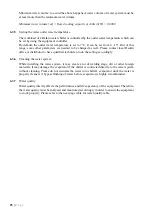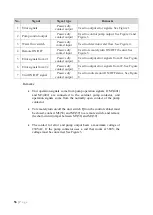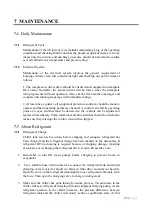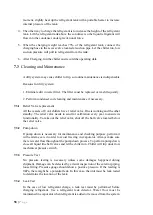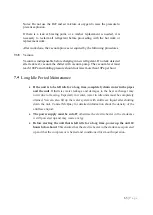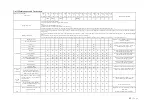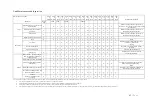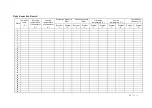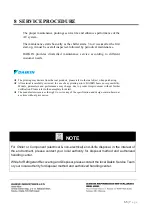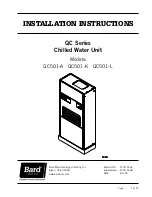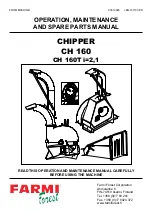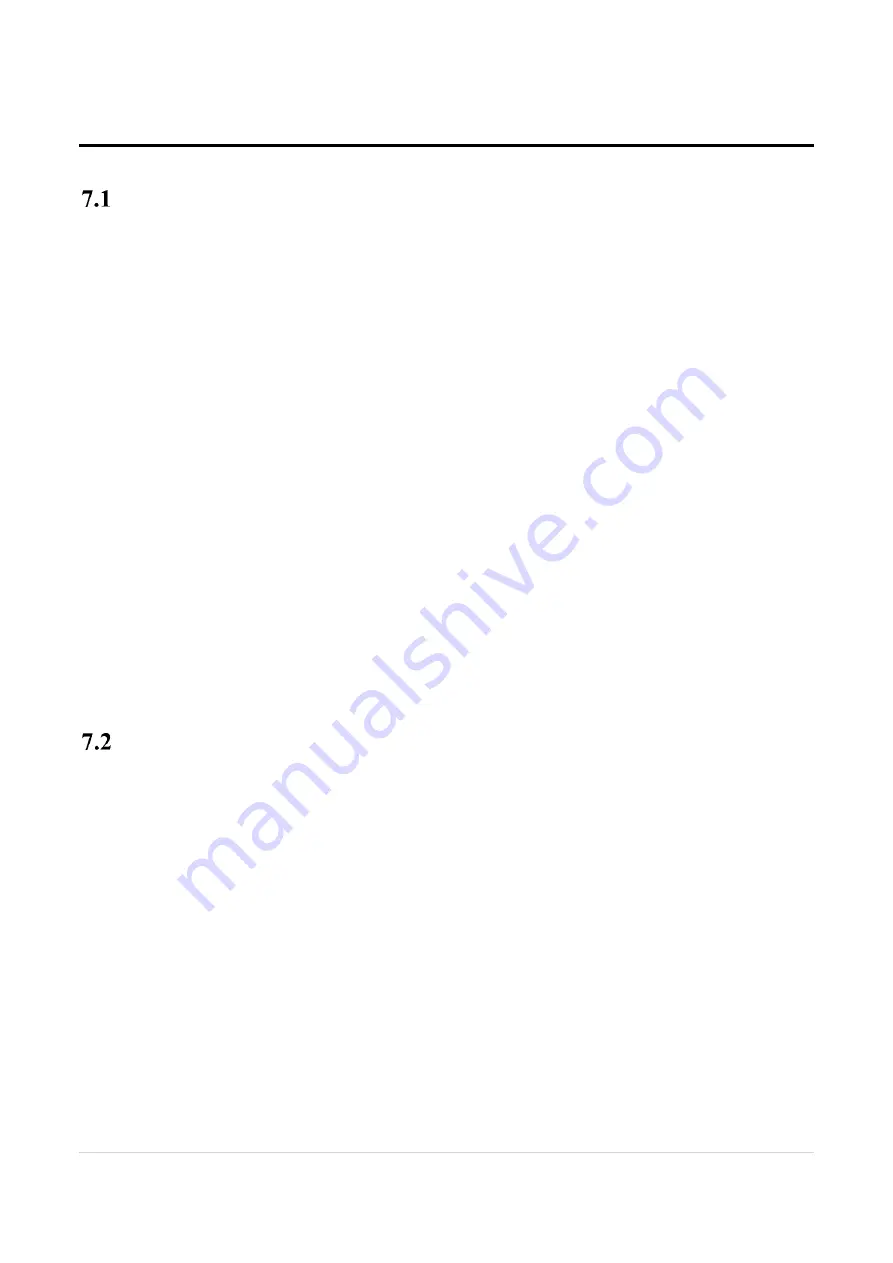
63 |
P a g e
7
MAINTENANCE
Daily Maintenance
7.1.1
Refrigerant Cycle
Maintenance of the refrigerant cycle includes maintaining a log of the operating
conditions and checking that the unit has the proper refrigerant charge. At every
inspection, the suction, and discharge pressures should be noted and recorded,
as well chilled water temperatures and pressure drop.
7.1.2
Electrical System
Maintenance of the electrical system involves the general requirement of
keeping contacts clean and connections tight and checking on specific items as
follows:
1. The compressor current draw should be checked and compared to nameplate
RLA value. Normally, the actual current will be lower, since the nameplate
rating represents full load operation. Also, check all fan motor amperages and
compare unit running amperage with nameplate ratings.
2. At least once a quarter, all equipment protection controls, should be made to
operate and their operating points are checked. A control can shift its operating
point as it ages, and this must be detected so the controls can be adjusted or
replaced immediately. Pump interlocks and flow switches should be checked to
make sure they interrupt the control circuit when tripped.
About Refrigerant
7.2.1
Refrigerant Charge
Chiller leak test has been done before shipping and adequate refrigerant has
been charged and the refrigerant charge has been marked on the nameplate. If
refrigerant R134a charging is required because of shipping damage, repairing
at leak area or recharging the refrigerant after vacuum. Please take note:
1.
Remember to turn ON water pumps before charging to prevent frozen in
evaporator.
2.
Use a suitable hose with connector to connect the refrigerant tank and chiller
charging valve located at liquid (in between filter drier and subcool header).
Open the valve on the refrigerant tank slightly to use refrigerant eliminate air in
the hose. Then open the charging valve to charge in refrigerant.
3.
Make sure the chiller has gone through vacuum process. Vacuum state in the
chiller will ease refrigerant charging without refrigerant charging pump. As the
refrigerant pressure in the chiller increases, the pressure difference between
refrigerant tank and the chiller will slowly achieve equilibrium state. At this
Summary of Contents for UAA-ST3M
Page 2: ......
Page 17: ...13 P a g e UAA 105 UAA 150 UAA175 UAA220 UAA204 220...
Page 18: ...14 P a g e Figure 7 Hanging Method UAA245 UAA348 UAA380 UAA450...
Page 42: ......
Page 44: ......









